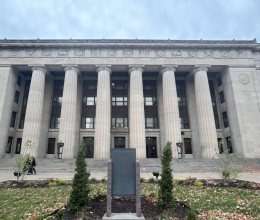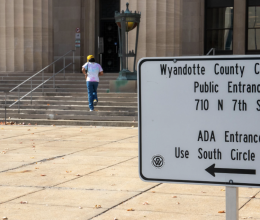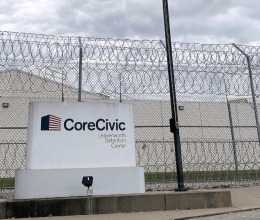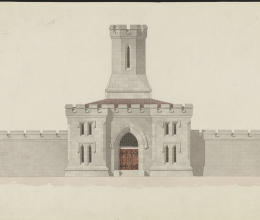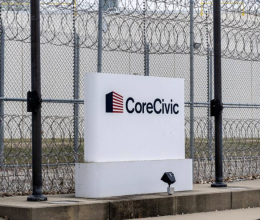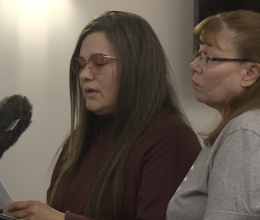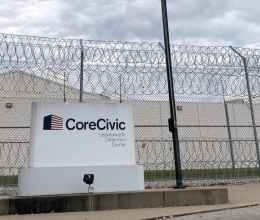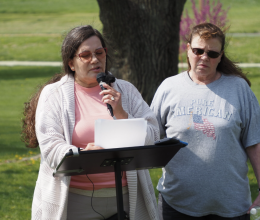
Proponent Testimony for SB 321 — Prohibiting the use of restraints during hearings
Testimony of Aileen Berquist
Community Engagement Manager, American Civil Liberties Union of Kansas
Senate Judiciary Committee
January 26, 2022 – 346-S
Committee Chairs and Members of the Committee,
Thank you for the opportunity to present testimony today. My name is Aileen Berquist. I am the Community Engagement Manager and lobbyist for the ACLU of Kansas. We are a nonpartisan, non-profit organization that works to preserve and strengthen the civil rights and liberties of every person in Kansas.
The ACLU of Kansas supports the passage of the proposed bill prohibiting the unjustified shackling of juveniles appearing before Kansas courts. Shackling children causes physical and emotional damage while creating bias against them in court, infringing upon their rights by undermining their presumption of innocence.
The serious physical damage caused by using shackles and restraints on juveniles is well-established. Unlike adults, children are still growing. Medical experts urge caution that using restraints could damage formative growth plates—the softer, more malleable sections of new bone in growing children.1
Cuffs and shackles also take an all-too-real toll on the mental health of juveniles. Again, experts agree. The American Academy of Child & Adolescent Psychiatry has opposed the practice for many years,2 and mental health professionals are clear that shackling and physical restraints should only be used as a last resort.3 A host of other organizations and medical professionals have called for an end to indiscriminate youth shackling.4
The practice is all the more troubling because we also know that the children appearing before our courts are already more likely to have unmet medical, mental health, and social needs.5 Putting those same kids in chains exacerbates those needs and does nothing to achieve the expressed goals of our juvenile justice system.6 As one young woman put it after being chained as a 12 and 14-year-old in a Maine courtroom, “What I still think about today is the humiliation and shame I felt being in public view, weighed down by loud metal shackles. The dehumanizing experience shaped not only how others saw me, but how I saw myself for many years.”7
Beyond the injustice and harm shackling and restraints cause, unlimited and automatic shackling is patently unnecessary. This bill provides a simple mechanism for using restraints only when absolutely necessary and only after the juvenile has been given an opportunity to be heard. These aren’t just good policies; they are consistent with basic notions of fairness and due process.
Finally, passing this bill is not controversial. Currently thirty-two other states and the District of Columbia limit or prevent the use of cuffs and restraints on juveniles appearing in Court.8 Legal organizations have also weighed in. The National Counsel of Juvenile and Family Court Judges has noted that shackling of children infringes upon the presumption of innocence, undermines confidence in the fairness of our justice system, interferes with the right to a fair trial, and can limit the child’s ability to engage in the court process.9 As a result, that group of jurists has called for a presumptive rule or policy against shackling children. Similarly, the American Bar Association has called for a presumption against the use of shackles and restraints on children, noting that the practice is contrary to law, interferes with a juvenile’s right to participate in their own defense, runs afoul of the purpose of the juvenile justice system, and is ultimately unnecessary.10
This bill is a necessary and just change to our current code. There is no reason for Kansas Courts to automatically shackle and restrain children appearing before them. This bill would end the practice except where absolutely necessary. In so doing, it protects the health, safety, and civil rights of children appearing before our state’s courts.
Thank you for your time and the opportunity to speak here today.
1 National Association of State Mental Health Directors:
https://www.nasmhpd.org/sites/default/files/Seclusion_Restraint_2.pdf
2 American Academy of Child & Adolescent Psychiatry:
https://www.aacap.org/aacap/Policy_Statements/2015/Mandatory_Shackling_i...
3 See American Psychiatric Association, The Use of Restraint and Seclusion in Correctional Mental Health Care, 4 (2006); Howard Bath, The Physical Restraint of Children: Is It Therapeutic?, 64 Am. J. Orthopsychiatry 40, 41, 48 (1994)
4 National Juvenile Defender Center (listing organizations and positions):
https://njdc.info/practice-policy-resources/topical-issues/shackling/
5 American Academy of Pediatrics:
https://www.aap.org/en/pages/2019-novel-coronavirus-covid-19-infections/...
6 K.S.A. § 38-2301
7 CBS News:
https://www.cbsnews.com/news/why-do-we-still-shackle-kids-in-court/
8 National Conference of State Legislatures:
https://www.ncsl.org/research/civil-and-criminal-justice/states-that-lim....
9 National Counsel of Juvenile and Family Court Judges:
https://njdc.info/wp-content/uploads/2015/08/NJCFCJ-Shackling-Resolution...
10 National Juvenile Defenders Center:
https://www.ncsl.org/research/civil-and-criminal-justice/states-that-lim....
